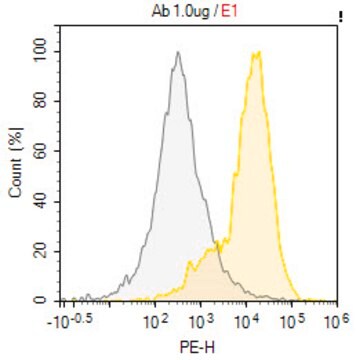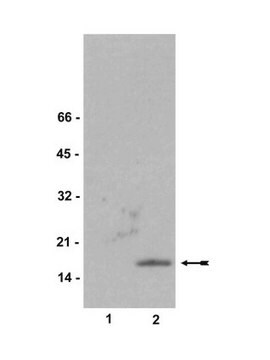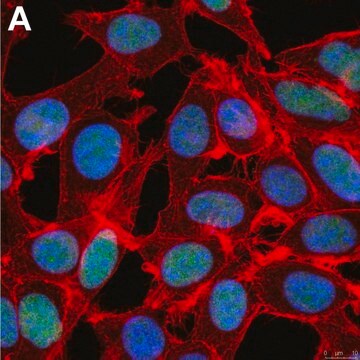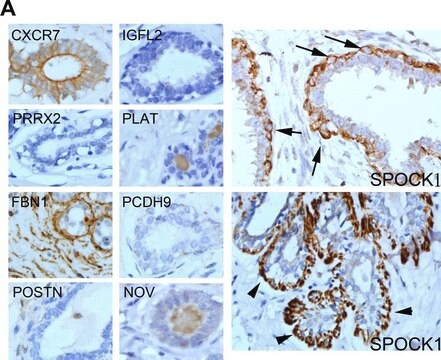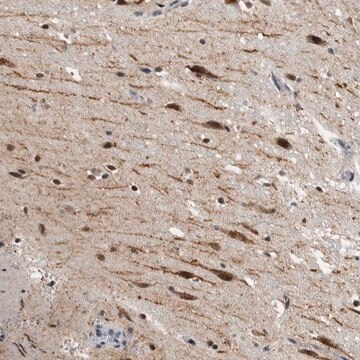MABF3171
Anti-CXCR7 Antibody, clone 10D1
Synonim(y):
CXC-R7, CXCR-7, Homolog RDC1 receptora sprzężonego z białkiem G, Nietypowy receptor chemokiny 3, RDC-1, Receptor chemokiny C-X-C typu 7, Receptor sprzężony z białkiem G 159, Sierocy receptor chemokiny 1
About This Item
Polecane produkty
pochodzenie biologiczne
mouse
Poziom jakości
forma przeciwciała
purified antibody
rodzaj przeciwciała
primary antibodies
klon
10D1, monoclonal
reaktywność gatunkowa
human
opakowanie
antibody small pack of 100
metody
flow cytometry: suitable
inhibition assay: suitable
izotyp
IgG2a
sekwencja epitopowa
Extracellular domain
numer dostępu Protein ID
numer dostępu UniProt
informacje o genach
human ... ACKR3(57007)
Specyficzność
Immunogen
Zastosowanie
Oceniane za pomocą cytometrii przepływowej w komórkach Raji.
Analiza cytometrii przepływowej: 1 µg tego przeciwciała wykryło CXCR7 w milionie komórek Raji.
Testowane zastosowania
Test hamowania: Reprezentatywna partia hamowała wiązanie głównego liganda CXCL12 z CXCR7. (Patent ID: WO2010141986A1).
Analiza cytometrii przepływowej: Reprezentatywna partia wykryła CXCR7 w zastosowaniach cytometrii przepływowej (ID patentu: WO2010141986A1).
Uwaga: Rzeczywiste optymalne rozcieńczenia robocze muszą być określone przez użytkownika końcowego jako próbki, a warunki eksperymentalne mogą się różnić w zależności od użytkownika końcowego.
Opis wartości docelowych
Postać fizyczna
Rekonstytucja
Przechowywanie i stabilność
Inne uwagi
Oświadczenie o zrzeczeniu się odpowiedzialności
Nie możesz znaleźć właściwego produktu?
Wypróbuj nasz Narzędzie selektora produktów.
Kod klasy składowania
12 - Non Combustible Liquids
Klasa zagrożenia wodnego (WGK)
WGK 2
Temperatura zapłonu (°F)
Not applicable
Temperatura zapłonu (°C)
Not applicable
Certyfikaty analizy (CoA)
Poszukaj Certyfikaty analizy (CoA), wpisując numer partii/serii produktów. Numery serii i partii można znaleźć na etykiecie produktu po słowach „seria” lub „partia”.
Masz już ten produkt?
Dokumenty związane z niedawno zakupionymi produktami zostały zamieszczone w Bibliotece dokumentów.
Nasz zespół naukowców ma doświadczenie we wszystkich obszarach badań, w tym w naukach przyrodniczych, materiałoznawstwie, syntezie chemicznej, chromatografii, analityce i wielu innych dziedzinach.
Skontaktuj się z zespołem ds. pomocy technicznej